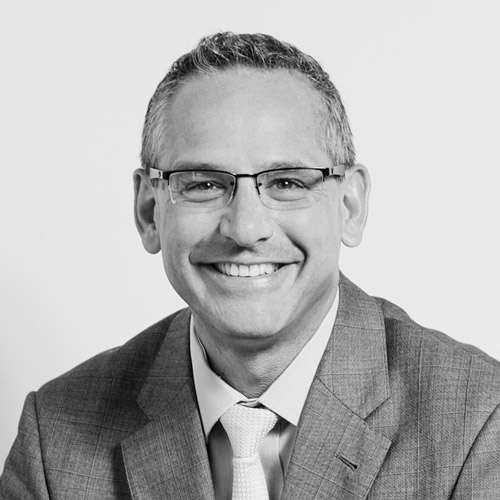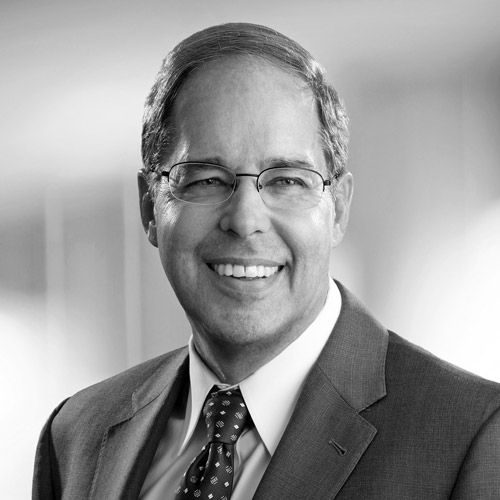You have an interesting background as a CMIO, starting as an ER physician. What led you to take on a role in technology?
Dr. David Adinaro: Mainly, I moved into the leadership side of the emergency department as the chief of emergency medicine. In that role, I became very interested in process improvement. How do we make things work better? A lot of my time was spent on figuring out how systems work. That led me to getting a master’s degree in healthcare systems engineering, which I just finished up last summer. The program interested me because it had a lot of overlap with quality and process and improvement.
As I was finishing up my master’s, the hospital announced that they were creating a chief medical information officer position. My combination of clinical expertise, leadership and interest in systems in the ER was a good fit for the role and my interests.
What projects have you taken on as CMIO?
Adinaro: For the first three to six months, I was drinking from a fire hose. We rolled out our new program for the new ICD-10 codes and a new provider documentation system for hospital inpatients. It’s been a trial by fire, but very fun and I’ve learned a lot. Much of what I do is translating between physicians and the IT team and providing solutions for physicians that give them what they need—not necessarily what they think they need.
Our IT team is very motivated with a strong sense of mission. I have a new understanding of the amount of prep work and testing that goes into the rollout of an IT system and that makes me appreciate our IT folks. Our big project now is implementing a new enterprise system to get thirty of our major computer systems onto one platform to streamline the providers’ workflow. The freer movement of information will allow doctors and nurses to spend more time at the bedside.
Three ways
to improve
the EHR
According to Dr. David Adinaro
1. Voice Recognition
If you’re a physician over fifty, you grew up using dictation. Allowing those providers to use voice recognition in the EHR could be a huge timesaver for that segment of the provider population.
2. Mobile Access
Millennial caregivers, which includes most of our residents, want to use mobile technology to connect to the EHR. Adding mobile functionality that is intuitive and seamless will help increase efficiency in charting.
3. Search Query
Depending on a caregiver’s specialty, we need to add a search function that can pull out the relevant information from the terabytes of patient data we now collect.
Since you began your career, how have you seen technology have the biggest impact on patient outcomes?
Adinaro: When it works well, the electronic health record gives everybody taking care of a patient the ability to have up-to-date access to the same information. That reduces risk, increases safety, and allows our care team to apply the best possible solutions. Without a doubt, the ability to move information seamlessly from one person to another in a hospital setting with critically ill patients is very important to patient outcomes.
The EHR has been around for years, but still has a long way to go. What are you hoping to improve with St. Joseph’s EHR?
Adinaro: From a point of view of the logistics of care that takes place and how information is received and imparted quickly, the system is working really well. Still, there are bugs when you’re trying to make documentation easier for physicians. It can be a frustrating experience for the physicians who are tasked with charting information. The typical patient record has gone from a concise one-page to a more detailed seven pages that may not convey information as easily. It’s great to have all the information in one place, but now the problem is how to pick out relevant information for each different type of physician. The EHR really needs a search function, which it does not currently have.
What big projects are you working on to improve technology efficiency?
Adinaro: The biggest challenge we face is making sure the EHR fits with rest of the workflow for the patient. Eighty percent of our physicians use at least two applications a day to record and read patient data, and twenty percent use four or more applications. Getting them from four to one is going to help them a lot. Putting into place a cohesive enterprise system will improve the workflow tremendously.
We’re in the final stages of evaluating Cerner Millennium to be our enterprise system. It will be an expensive undertaking that will disrupt workflows initially. I am focused on ensuring that the final product will be as helpful as possible. That means building a program based on what we should be doing, not on what we’re currently doing. This technology presents an opportunity to make other systems better and integrate better with physicians’ workflow. In the end, the a true enterprise system will decrease time demands on the providers so they can spend more time with patients.
Where do you hope to take St. Joseph’s in the next five years?
Adinaro: My efforts are driven by our mission to take care of the diverse, urban population we serve. We serve a community that has poverty and many barriers to good access to healthcare. I want our technology to improve both access and the quality of our care. Right now, we have collection of great parts—two hospitals, a nursing home, subacute care, a home healthcare association, and numerous outpatient clinics.
The problem is that the different pieces are not well connected; they feel like separate organizations. We want a patient to receive seamless care across our continuum from the ER to inpatient, then to subacute care, and back into our community clinics by allowing their information to flow seamlessly between the different St. Joseph’s affiliates. That’s a win for the patient and a win for us. Our ability to compete in the quality care market depends on a free flow of information where patients won’t get lost in the cracks. AHL

